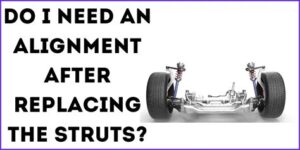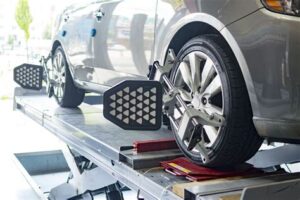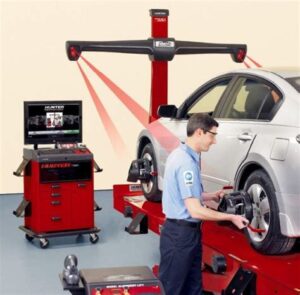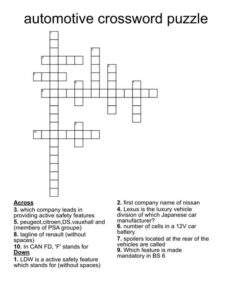In today’s fast-paced world, enjoying a premium audio experience in your car can transform even the dullest commute into a pleasurable journey. Car stereo time alignment is a vital aspect of achieving that perfect sound, ensuring that music reaches your ears at the ideal moment for a harmonious listening experience. Whether you’re a casual listener or an audiophile, understanding the nuances of time alignment can significantly enhance your vehicle’s audio performance. In this article, we’ll delve into the fundamentals of time alignment in car stereo systems, explore how to measure time delay for optimal sound, and provide expert tips for adjusting your setup. Additionally, we’ll highlight the benefits of time alignment, common pitfalls to avoid, and answer frequently asked questions, empowering you to unlock the full potential of your car’s audio system. Buckle up and get ready to elevate your sound journey!
Understanding Time Alignment In Car Stereo Systems
Time alignment in car stereo systems is a crucial concept that refers to the synchronization of sound waves from different speakers to ensure that audio reaches the listeners’ ears simultaneously. This alignment is essential for creating a clear and cohesive soundstage, which enhances the overall listening experience.
In most vehicles, speakers are positioned at varying distances from the listener. For instance, the front speakers might be closer to the driver than the rear speakers. Without proper time alignment, sound waves from these speakers can arrive at different times, causing phase issues and a muddied audio experience.
To achieve optimal sound, time alignment involves adjusting the delay of each speaker within the car stereo system. This can typically be done through digital signal processors (DSPs) or advanced head units that have built-in time alignment features. By precisely measuring the distance between each speaker and compensating for these differences, you can ensure that all sound waves reach the listener in unison.
The result is a more immersive audio experience, where clarity, detail, and depth are significantly enhanced. Understanding this principle is the first step in mastering your car stereo system and fully appreciating the benefits of high-quality sound reproduction.
How To Measure Time Delay For Optimal Sound
Measuring time delay in a car stereo system is crucial for achieving an optimal audio experience. Proper measurement ensures that sound from all speakers reaches your ears at the same time, creating a more balanced and immersive sound stage. Here’s how to effectively measure time delay:
- Use a Sound Level Meter: Invest in a sound level meter app or device. These tools can help you capture the sound output from your speakers accurately.
- Identify Reference Points: Choose a reference point in your vehicle, typically the driver’s seat, where you will measure the sound. This point will act as your central listening position.
- Measure Distances: Use a tape measure to find the distance from each speaker to your reference point. Note the distances, as they will be key to calculating the time delays.
- Calculate Time Delay: The speed of sound is approximately 1,125 feet per second (or 343 meters per second) at room temperature. Divide the distance (in feet) by the speed of sound to get the time delay for each speaker. For example, if a speaker is 3 feet away, the time delay would be 3 feet / 1,125 feet/second = 0.00267 seconds or about 2.67 milliseconds.
- Adjust Settings: Use your car stereo system’s time alignment feature to enter the calculated delays for each speaker. This adjustment compensates for the differences in distance and ensures that sound waves reach your ears simultaneously.
- Test and Refine: Play familiar audio tracks and make minor adjustments as needed. Listening critically after each adjustment can help you fine-tune the time alignment for the best sound quality.
By following these steps, you can effectively measure the time delay in your car stereo system, allowing you to optimize the audio experience and enjoy crystal-clear sound on the road.
Adjusting Your Car Stereo For Perfect Audio Experience
To achieve the best sound quality from your car stereo, careful adjustment is essential. The following steps provide a guide to help you fine-tune your audio settings, ensuring a balanced and immersive listening experience.
- Speaker Positioning: Start by ensuring that your speakers are correctly positioned. The angle and height can significantly impact sound delivery. Ideally, the speakers should point toward your ears.
- Volume Level: Set a base volume level before making any adjustments. This level will help you accurately gauge the effects of changes in EQ settings and time alignment.
- Equalization Settings: Adjust the EQ settings to accommodate your personal preferences and the specific characteristics of your vehicle’s cabin. This might involve boosting certain frequencies or cutting others that can cause distortion.
- Time Alignment: Use the time alignment feature on your car stereo, if available. This feature allows for precise adjustments to ensure that sound from all speakers reaches your ears simultaneously. Adjust the delay for each speaker accordingly.
- Test Different Genres: Assess your adjustments by playing various music genres. This will help you to analyze how well the system performs under different sound conditions.
- Iterate Adjustments: Fine-tuning is an iterative process. Don’t hesitate to make incremental adjustments and re-evaluate until you achieve the desired audio quality.
By following these steps, you can ensure that your car stereo delivers an optimal listening experience tailored to your tastes and vehicle acoustics. The right adjustments can make all the difference in transforming your daily drives into a musical journey.
Benefits Of Time Alignment In Car Stereo Performance
Implementing time alignment in your car stereo system brings a myriad of advantages that significantly enhance the overall audio experience. Here are some of the key benefits:
- Improved Sound Stage: Time alignment helps create a more immersive sound stage, allowing listeners to perceive instruments and vocals originating from specific points within the vehicle. This spatial distinction adds depth and realism to your listening experience.
- Enhanced Clarity: By ensuring that sound waves reach your ears simultaneously, time alignment reduces phase cancellation and other audio issues. This leads to clearer sound reproduction, allowing you to enjoy every note and detail in the music.
- Better Bass Response: A well-aligned system can optimize bass frequencies, making them more robust and defined. This results in a more powerful low-end performance that complements the mid and high frequencies effectively.
- Personalized Listening Experience: Time alignment allows for customization based on the listener’s seating position. Whether you are driving solo or with passengers, adjustments can be made for a tailored sound experience for everyone in the car.
- Increased Sound Pressure Levels: Proper time alignment can help in maximizing the efficiency of your speakers, increasing the overall sound pressure levels without distortion, making your audio system more enjoyable, even at higher volumes.
- Reduced Listener Fatigue: Clear, well-aligned audio reduces the stress on the ears, resulting in less listener fatigue during long journeys. This allows for a more enjoyable ride without the annoyance of muddled or harsh sounds.
Overall, incorporating time alignment into your car stereo system can dramatically elevate your audio experience, making every drive a pleasurable one.
Common Mistakes To Avoid When Setting Car Stereo Time Alignment
Setting the time alignment in your car stereo system can be a game-changer in achieving crystal-clear audio. However, several common mistakes can hinder your efforts and negatively impact sound quality. Here are some pitfalls to avoid:
- Neglecting Speaker Placement: One of the most significant factors in achieving proper time alignment is the physical placement of your speakers. Failing to consider their location can lead to poor sound staging and crossover issues that time alignment alone cannot fix.
- Setting Delay Incorrectly: When adjusting the delay for each speaker, always ensure you are measuring from the listener’s position. Miscalculating the distance can result in tonal imbalances and an uncoordinated sound experience.
- Ignoring Frequency Response: Time alignment should not be done in isolation. Take into account the frequency response of your speakers to ensure that they work harmoniously together. Overemphasizing one frequency range can lead to a skewed listening experience.
- Overcomplicating Settings: Sometimes, simpler settings yield better results. Avoid turning too many knobs and altering multiple parameters, as this can make it difficult to diagnose specific issues in sound quality.
- Not Using Proper Testing Methods: Utilize appropriate measurement tools or software to test your car stereo system after adjustments. Relying solely on your ears may lead to inaccuracies in sound perception.
- Skipping Calibration: After adjusting your time alignment, it’s essential to calibrate your car stereo. Skipping this step can leave you with a suboptimal sound experience, no matter how precise your alignment appears.
- Adjusting Volume Levels: Ensure that your volume levels are set properly during adjustments. Too high or too low volume can distort sound, making it harder to accurately perceive the benefits of time alignment.
By avoiding these common mistakes, you’ll be on the right path to achieving an exceptional audio experience in your car stereo system. Keep in mind that time alignment is just one piece of the puzzle; other audio settings play a vital role in overall sound quality as well.
Frequently Asked Questions
What is car stereo time alignment?
Car stereo time alignment is a technique used in audio systems to ensure that sound from all speakers reaches the listener’s ears simultaneously, improving sound clarity and imaging.
Why is time alignment important in a car stereo system?
Time alignment is important because it helps to minimize phase issues and enables a cohesive audio experience, allowing for better separation of instruments and a more accurate representation of the music.
How can I achieve time alignment in my car stereo?
You can achieve time alignment by using digital signal processors (DSPs) or head units with built-in time alignment features. These devices allow you to adjust the delay of each speaker to compensate for their distance from the listener.
Is manual adjustment of time alignment necessary?
Manual adjustment is often necessary to fine-tune the settings according to your specific vehicle layout and personal listening preferences, ensuring optimal sound quality.
Can I use a smartphone app for time alignment?
Yes, there are several smartphone apps available that can assist with measuring distances and adjusting time alignment settings, making it easier for users to optimize their car audio systems.
What are common mistakes to avoid when setting time alignment?
Common mistakes include neglecting speaker placement, making incorrect delay calculations, and not considering the acoustics of the vehicle’s interior, which can significantly affect sound quality.
Will time alignment improve all types of music?
While time alignment generally improves sound quality for all types of music, its benefits are particularly noticeable with complex arrangements, such as orchestral music or tracks with multiple instruments.





